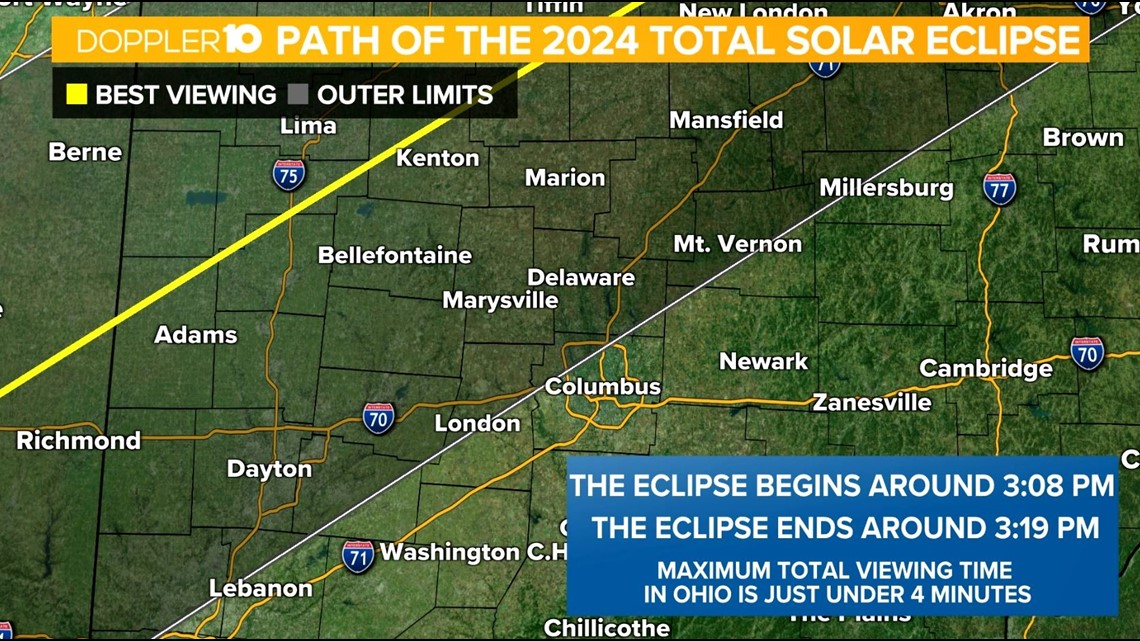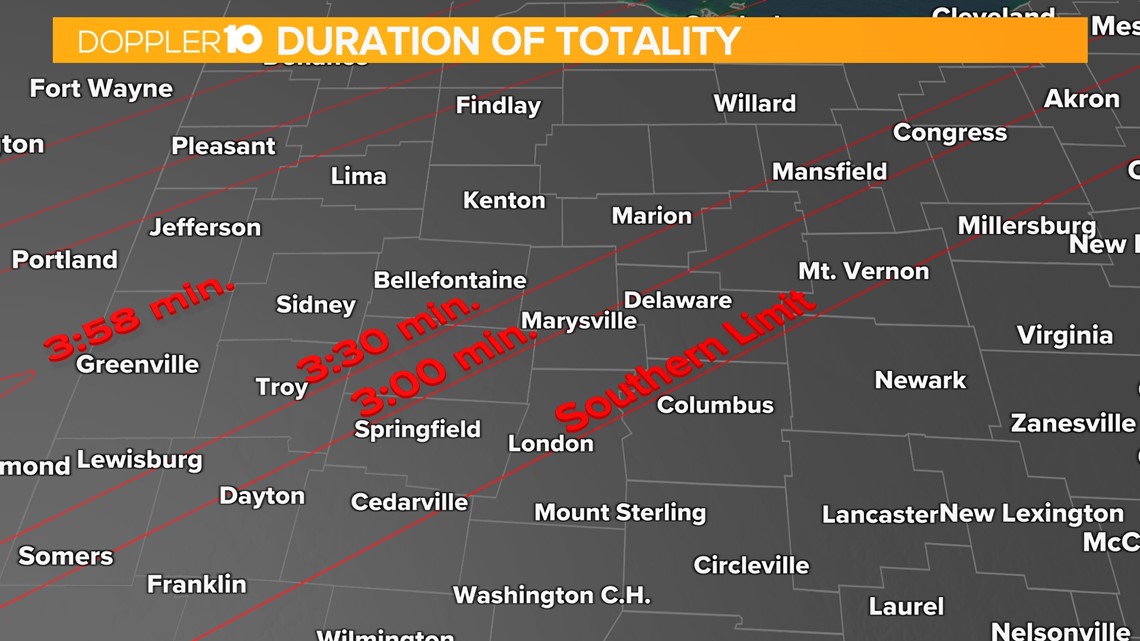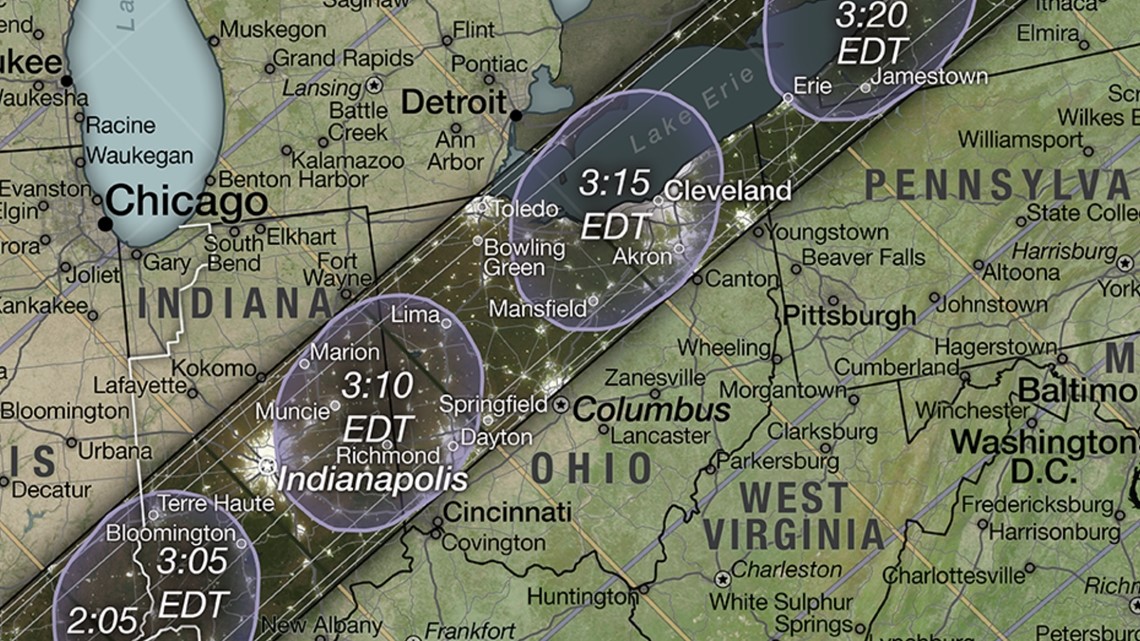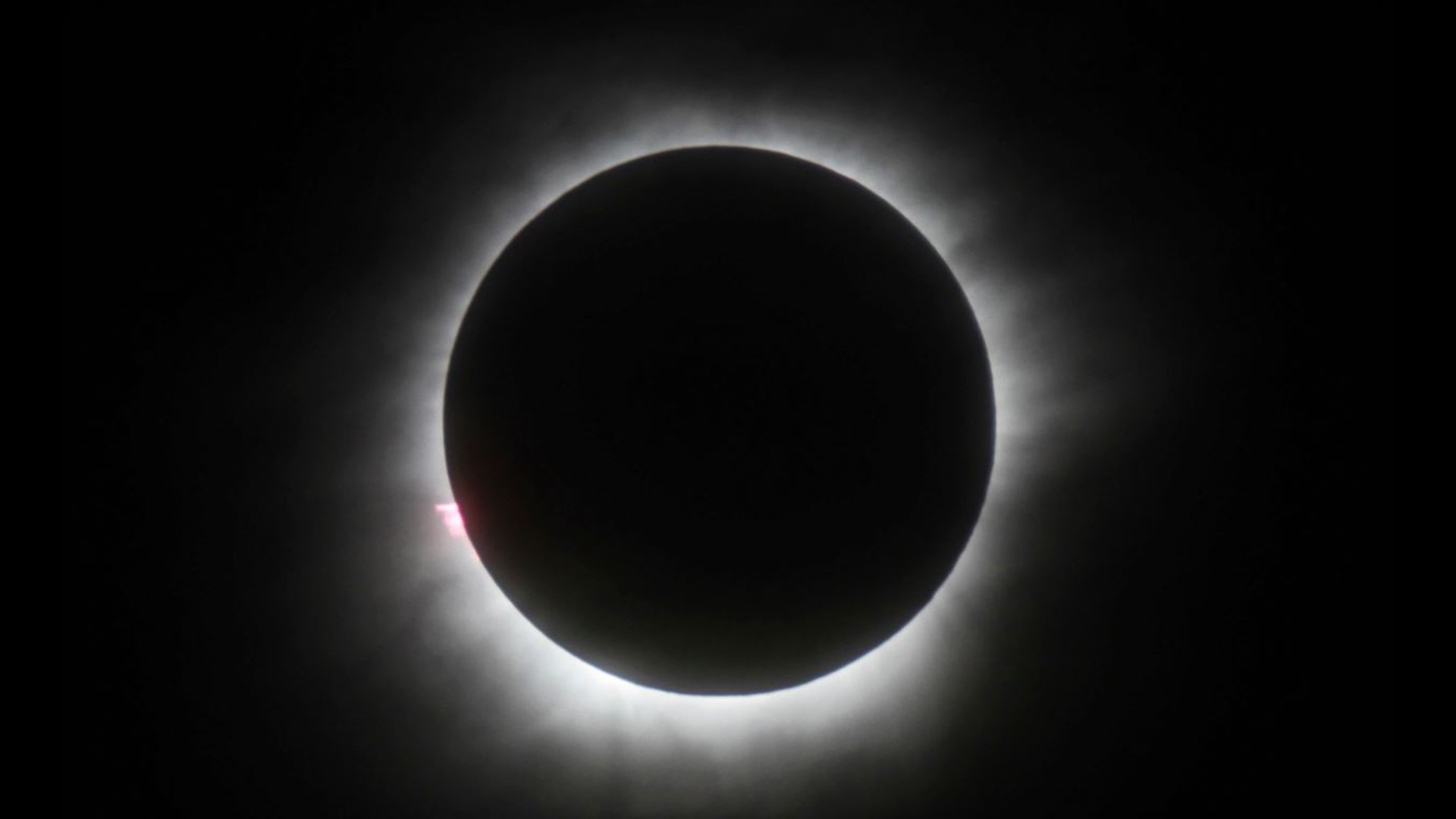COLUMBUS, Ohio — As the day of the total solar eclipse draws near, many Ohioans are wondering which cities fall under the path of totality and have the best view.
While the path of totality covers much of northern Ohio, areas of central Ohio may be able to catch the brief moments of total darkness on April 8, while others will see the sun at least 95% blocked by the moon.
The last time the state has seen a total eclipse like this was in 1806, making this a once-in-a-lifetime event.
According to NASA, in Cleveland, a partial eclipse will begin at 1:59 p.m. and end at 4:29 p.m., but the totality begins at 3:13 p.m. and ends at 3:17 p.m. Cleveland is one of the best places in Ohio to view the eclipse as it lies close to the center line in the path of totality and will spend nearly four minutes in darkness.
But, what about in central Ohio? If you're in the Columbus area, you may have to drive a few minutes northwest in order to be in the path of totality. Downtown and The Ohio State University are not in the path.


Here’s a list of locations throughout the central Ohio area that are among the spots with the longest time in totality (in minutes), according to the National Solar Observatory and Eclipse2024.org:
- Bucyrus - 3:46
- Centerburg - 1:24
- Delaware - 2:35
- Dublin - 1:23
- Hilliard - 43 seconds
- Lewis Center - 1:49
- London - 38 seconds
- Mansfield - 3:16
- Marion - 3:34
- Marysville - 2:56
- Mt Gilead - 3:06
- Plain City - 2:04
- Powell - 1:45
- Upper Sandusky - 3:50
- Worthington - 30 seconds


Just because you don't see your community listed above doesn't mean your area won't have a view of the eclipse. Many communities near Columbus, including downtown, will have view of a deep partial eclipse, meaning that viewers will still see the moon pass over the sun but will not see them perfectly lined up.
The image below shows the path of totality in Ohio. The more centralized you are within the path, the longer you will experience totality.


What is a solar eclipse?
A solar eclipse happens when the moon passes between the sun and the Earth. Sometimes the moon only blocks part of the sun's light. This results in a partial solar eclipse. When the moon blocks all of the sun, that's called a total solar eclipse.
When the moon blocks the sun's light, it casts a shadow on part of the Earth.
How often do solar eclipses happen?
According to NASA, solar eclipses happen at least twice a year somewhere on Earth. The maximum number of solar eclipses (partial, annular or total) is five per year.
How can I view the eclipse?
NASA's recommendations for viewing the eclipse include:
- View the sun through eclipse glasses or a handheld solar viewer during the partial eclipse phases before and after totality.
- You can view the eclipse directly without proper eye protection only when the Moon completely obscures the Sun’s bright face – during the brief and spectacular period known as totality. (You’ll know it’s safe when you can no longer see any part of the Sun through eclipse glasses or a solar viewer.)
- As soon as you see even a little bit of the bright Sun reappear after totality, immediately put your eclipse glasses back on or use a handheld solar viewer to look at the Sun.
At many of the viewing events in central Ohio, solar eclipse glasses will be distributed. But, if you'd like to secure yours ahead of time, 10TV has a list of places where you may be able to find them. Click here to learn more.
To learn how you can prepare for the eclipse, click here.

